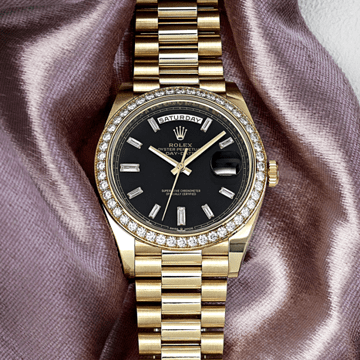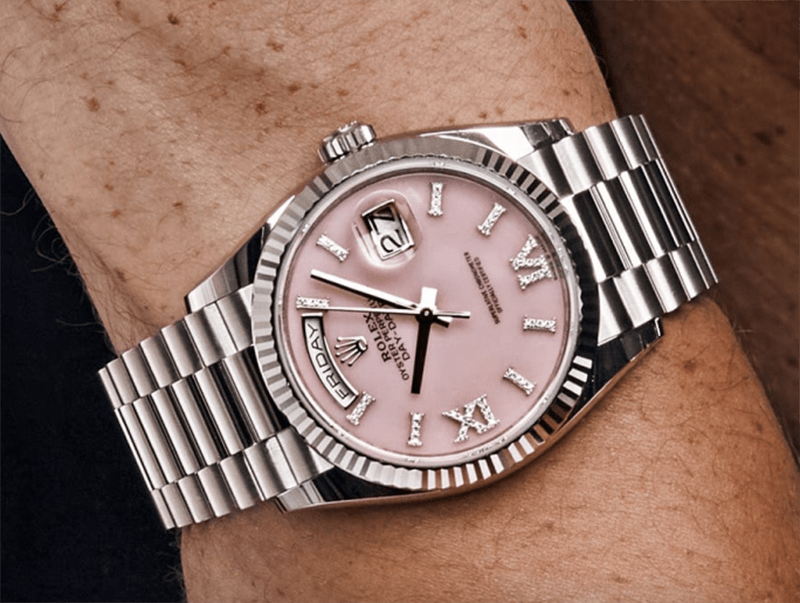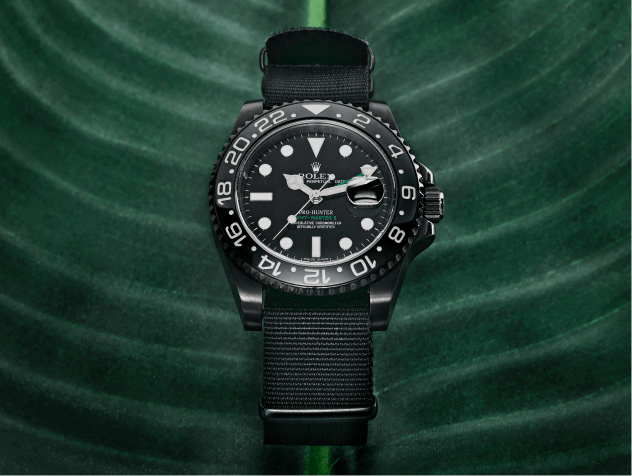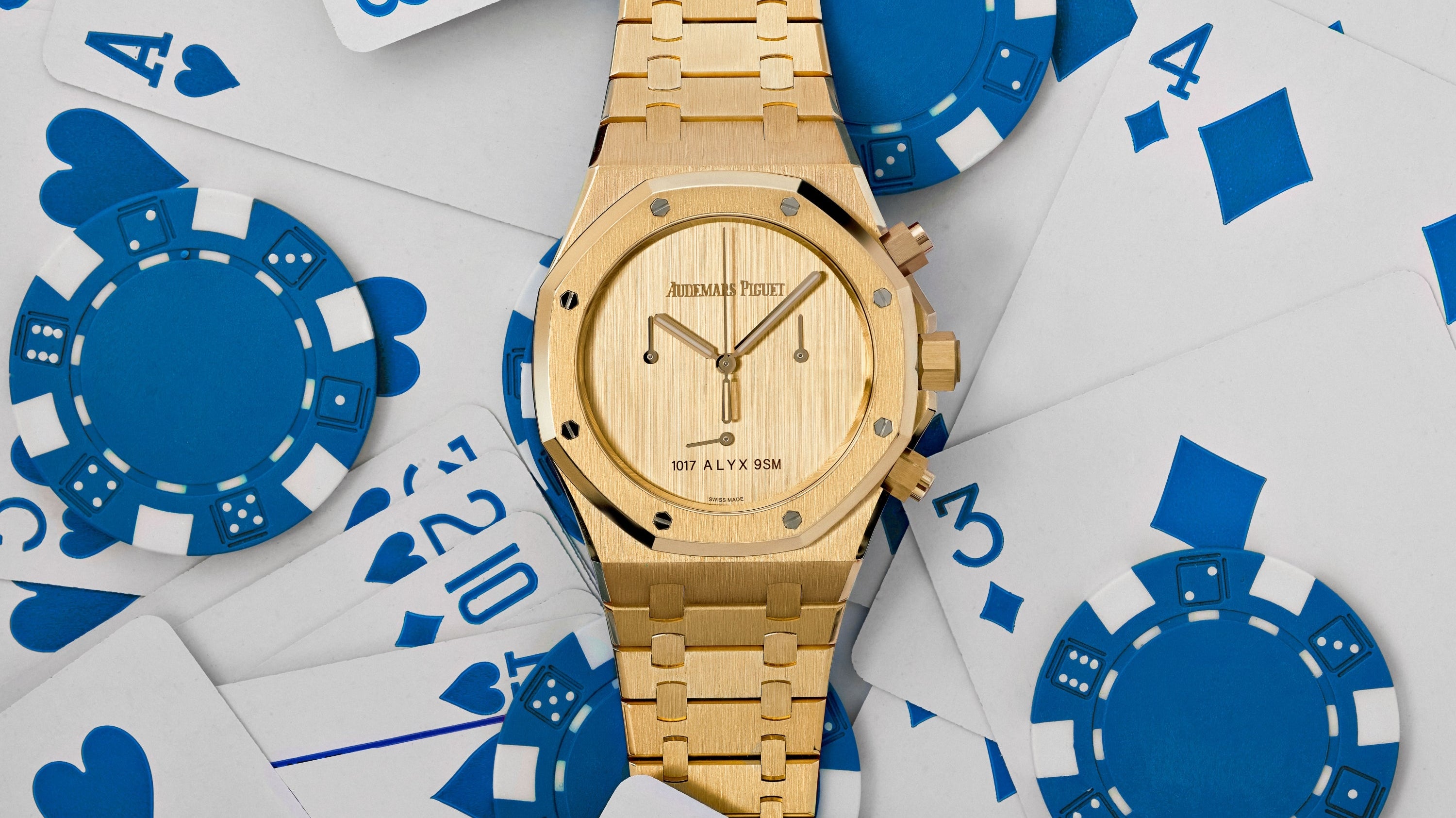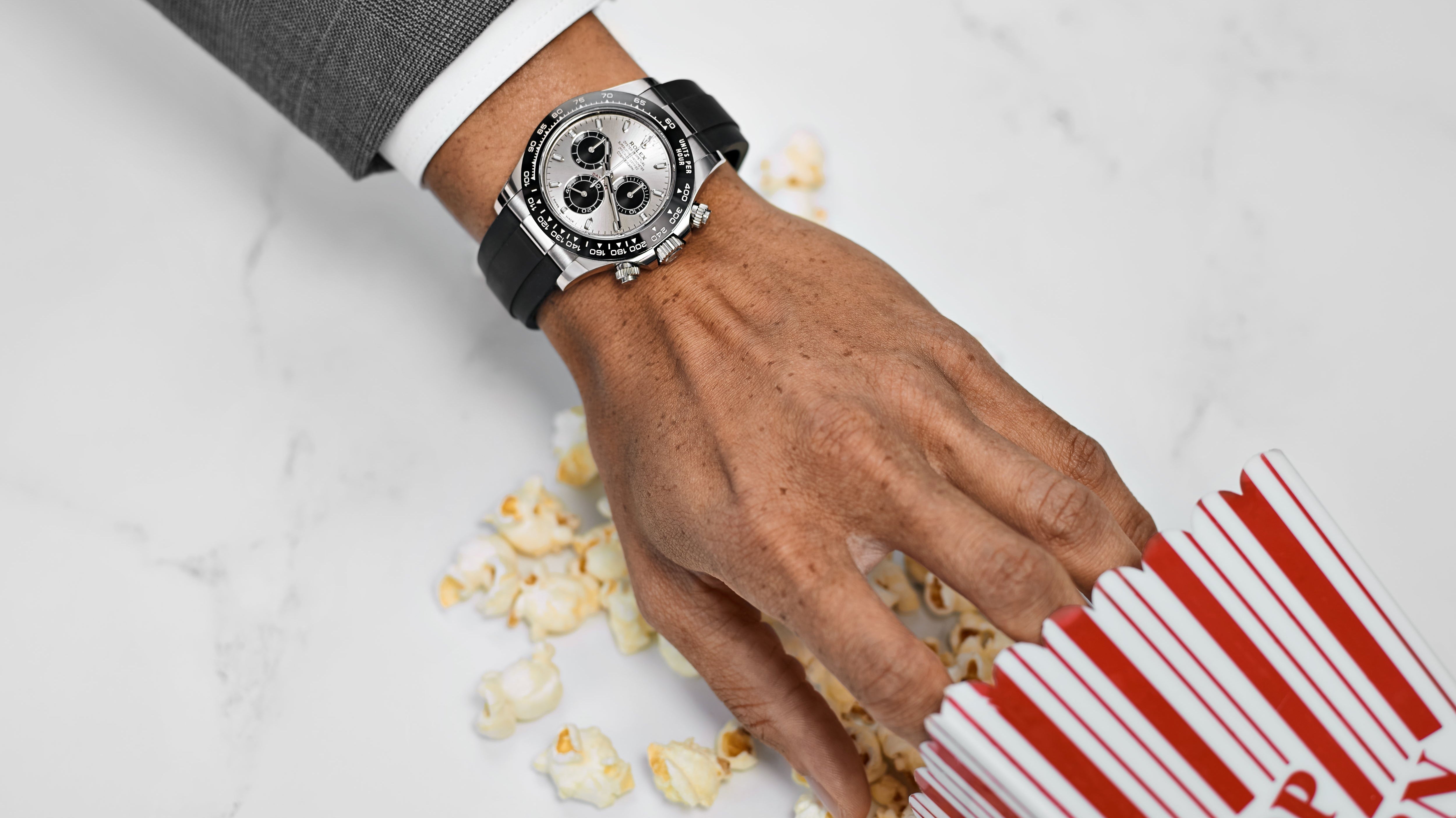Colloquially known as the “Panda Daytona” among collectors, this famous style of Rolex watch has become one of the brand’s hottest models in recent years, and it is a consistent favorite among enthusiasts in all its various forms. While all Rolex Panda Daytona watches are part of the brand’s Cosmograph Daytona collection, the “Panda” nickname applies to a particular dial colorway that has existed in Rolex’s catalog since the 1960s, and this means there are multiple different Rolex models that are all categorized as “Panda Daytona” watches. Given that the history of the Panda Daytona spans over half a century, there are quite a few significant details that separate the different models, and here we are going to break down everything you need to know about Rolex Panda Daytona watches.
What Is a Rolex Panda Daytona?
At the heart of the definition, a “Panda Daytona” is simply a Rolex Cosmograph Daytona that is fitted with a white dial with contrasting black registers. The “Panda” part of the nickname stems from its resemblance to the famous black and white Asian bear, and it’s important to note that this nickname is entirely informal, which means that you won’t find it referenced anywhere in Rolex’s official catalog. Historically, the stainless steel Rolex Daytona has been offered with the choice of either a light or dark dial, and while the white versions with black registers have been dubbed Pandas, the inverted version is frequently referred to as the “Reverse Panda” with its black surface and contrasting white registers.
However, just like everything related to Rolex, there are some nuances and discrepancies within the collecting community over the definition of the “Panda Daytona” moniker. Purists will say that it only applies to the vintage Rolex Daytona models that are fitted with black and white “Paul Newman” dials, as these are the only versions that are actually white in color with fully black chronograph registers. Other folks will include the tri-color “Paul Newman” dials into this category, and some will even go so far as to count the silver dials with black registers that were fitted to vintage Daytona watches.
In addition to the various vintage references, two modern Rolex Daytona models are also commonly referred to as Panda Daytona watches. The first is the white dial version of the ref. 116500LN that was produced from 2016 until 2024, while the current model is the ref. 126500LN, which was just announced earlier this year at Watches & Wonders Geneva 2024. While there are a number of notable differences between these two modern Panda Daytona watches, both references are characterized by their crisp white dials, black Cerachrom (ceramic) bezels, and contrasting black-finished rings surrounding their trio of chronograph registers.
About the Rolex Panda Daytona
Since the “Panda Daytona” nickname simply refers to a Rolex Daytona with a white dial and black chronograph registers, the version being produced by Rolex today represents a significant departure from those that were originally sold in the 1960s. Virtually everything about the watch from its case size to its materials and movement has evolved over the years; however, all Panda Daytona watches are characterized by their white and black dials.
Rolex Panda Daytona History
Since the model’s introduction, stainless steel Rolex Daytona watches have always been available with the option of either light or dark dials, although it wasn’t until the arrival of the first self-winding Daytona watches in 1988 that white replaced silver as the light-colored dial within the Daytona lineup. With that in mind, the brand’s “Exotic” dials (now known as “Paul Newman” dials) offered the Panda configuration of a white surface with contrasting black chronograph registers, and these dials also featured a distinct Art Deco font inside their trio of sub-dials.
Again, there are some discrepancies regarding the definition of what constitutes a Panda Daytona, and some collectors group the silver dials into this category, as they offer much of the same dark-on-light appearance. However, the common definition of the Panda Daytona nickname exclusively applies to white dials with black accents, and after the first generation of manually wound Daytona watches was finally discontinued in 1988, it would not be until 2016 and the arrival of ceramic bezels that a Panda dial would return to the Daytona collection.
Between 1988 and 2016, Rolex produced two different generations of the stainless steel Daytona, and these models were characterized by larger 40mm cases, sapphire crystals, and automatic chronograph movements. While the original self-winding Daytona relied on a caliber from Zenith, the second series used one of Rolex’s in-house movements; however, both versions featured metallic silver-colored rings around their trio of chronograph registers, which means that the white dial versions were not technically Panda Daytona watches.
When Rolex updated the stainless steel Daytona again in 2016, a tachymeter bezel made from black Cerachrom (ceramic) took the place of the steel version found among the previous generation, and the other key aesthetic update was that the rings around the chronograph registers of the white dial version were updated to black. With its crisp white dial, black contrasting rings, and black ceramic bezel, the white and black “Panda” colorway had been restored to the collection, and this model quickly picked up the “Panda Daytona” nickname.
In 2024, Rolex updated the Daytona once again, and while the new generation featured an improved movement and a revised case profile, the fan-favorite “Panda” colorway was retained, making these the second generation of ceramic-bezel Panda Daytona watches. Aside from the updated shape of the lugs and slightly slimmed down hour markers, the most notable physical difference accompanying this latest generation of Panda Daytona watches is that the black contrasting rings around its sub-dials have been made slightly thinner to improve legibility and provide an increased sense of balance.
Rolex Panda Daytona Key Details:
- Reference Numbers: 6239, 6241, 6240, 6262, 6264, 6263, 6265, 116500LN, 126500LN
- Nickname: “Panda”
- Years of Production: 1963-1988 (vintage references), 2016-2024 (116500LN), 2024-Present (126500LN)
- Materials: Stainless Steel
- Case Size: 37mm (vintage) or 40mm (modern)
- Functionality: Hours, minutes, seconds, 12-hour chronograph, tachymeter
- Bezel: Fixed w/ tachymeter scale, black acrylic or stainless steel (vintage); Cerachrom (modern)
- Dials: White with black registers (“Paul Newman” dials for vintage references)
- Hands: 18k white gold (baton-style)
- Luminous Material: Tritium (vintage) or Chromalight (modern)
- Crystal: Acrylic (vintage) or Sapphire (modern)
- Movement: Valjoux Cal. 72, Cal. 722, or Cal. 727 (vintage, manual winding); Rolex Cal. 4130 or Cal. 4131 (modern, automatic winding)
- Water Resistance: 50 meters (vintage) or 100 meters (modern)
- Bracelet: Oyster or Jubilee bracelet (vintage); Oyster bracelet w/ Easylink extension system (modern)
- Retail Price (2024): $15,100 USD
Rolex Panda Daytona Models
Despite being absent from Rolex’s catalog for over a quarter of a century, a surprisingly large number of Daytona watches have been fitted with Panda dials. While it is technically possible to find Panda dials inside all seven vintage Daytona references, it is important to mention that true black-on-white Panda dials were limited to the ultra-elusive “Paul Newman” variants, which means that a vintage Panda Daytona is going to be exponentially more rare (and expensive) compared to one of the later variants that are fitted with ceramic bezels.
Vintage Panda Daytona References
Given that the first generation of the Rolex Daytona was produced from 1963 until 1988 and spans seven distinct references, a surprising amount of diversity exists among vintage Panda Daytona watches. Bezels can be made from either black acrylic or stainless steel, pushers can either be of the pump-style or screw-down variety, and three different Valjoux-based movements were used inside the series until Rolex finally updated the Daytona to feature a self-winding caliber in 1988. Regardless of their differences, all vintage Rolex Panda Daytona watches are characterized by their 37mm cases, box-shaped acrylic crystals, and manual-wind movements. Additionally, since vintage Panda Daytona watches will be fitted with Paul Newman dials, all of them will include an Art Deco-style font within their chronograph registers, and due to their extremely limited numbers, these vintage models are easily some of the rarest and most collectible Rolex Panda dial watches.
Rolex Cosmograph Daytona 116500LN
Within the modern era, the first Panda Daytona was the Rolex Cosmograph Daytona ref. 116500LN, which was produced from 2016 until 2024 and holds the distinction of being the first stainless steel Daytona to feature a Cerachrom bezel. Featuring a 40mm case crafted from the brand’s signature Oystersteel (904L stainless steel), the Rolex Daytona 116500LN is fitted with a flat sapphire crystal, and it runs on the brand’s in-house Caliber 41430 automatic chronograph movement, which operates at a frequency of 28,800vph (4 Hz) with a power reserve of approximately 72 hours. Unlike the various vintage Panda Daytona watches, which have sub-dials that are entirely finished black, the chronograph registers on the white dial version of the Daytona 116500LN receive black contrasting rings to match the black ceramic bezel that surrounds the face of the watch.
Rolex Cosmograph Daytona 126500LN
Released at Watches & Wonders 2024, the Rolex Cosmograph Daytona ref. 126500LN is the current version of the Panda Daytona that largely builds upon the blueprint established by the previous generation. Similar to its predecessor, the Rolex Daytona 126500LN features a 40mm case diameter, flat sapphire crystal, black ceramic bezel, and screw-down pushers that help support its 100-meter depth rating. However, the proportions of the case and dial have both been updated on this latest generation of the Daytona, and while the new in-house Caliber 4131 movement offers the same on-paper specs as its direct predecessor, it now includes the brand’s Chronergy escapement with a higher level of overall decoration. Aside from the updates to the proportions of its case and dial, one other notable difference between the Daytona 126500LN and models from the previous generation is that the latest version now includes a thin metallic ring surrounding the outer rim of its black ceramic bezel.
Rolex Panda Daytona Price Information
When it comes to pricing for Rolex Panda Daytona watches, an incredibly wide range of values exist, and they are largely determined by the specific model and its overall condition. As of 2024, the official retail price for a Panda Daytona ref. 126500LN is $15,100 USD. However, just like most highly desirable Rolex models, getting your hands on a Panda Daytona at a retail level is incredibly difficult, and all Panda dial Daytona watches trade hands on the open market for values that are significantly higher than the price of a brand-new stainless steel Daytona.
Assuming that you aren’t lucky enough to secure an example at retail, the most affordable Rolex Panda Daytona watches are examples from the previous generation that are powered by the Cal. 4130 movement. Although these recently discontinued Daytona 116500LN watches still cost roughly twice the retail price of a brand-new stainless steel Daytona, they are also a minimum of several thousand dollars less expensive than their current-production counterparts when purchased on the secondary market. Prices for the Panda Daytona 116500LN typically fall somewhere between $30,000 and $35,000, with the difference between examples being largely determined by the age of the watch, its overall condition, and whether or not it is still accompanied by its original box and warranty card.
The next most affordable Rolex Panda Daytona watches will be the ones from the current-production series that was just launched in 2024. Due to its updates and being the latest generation of the model, the Daytona 126500LN costs more than its direct predecessor. However, due to the strong visual similarities between this series and the previous one, the additional premium is ultimately relatively modest when shopping on the secondary market. Since the Rolex Daytona 126500LN has only been in circulation for less than a single year, the price difference between examples is fairly minimal, and most Panda dial Daytona 126500LN watches will be priced at anywhere between $36,000 and $39,000 on the secondary market.
By a significant margin, the absolute most expensive Rolex Panda Daytona watches will be the vintage examples that are fitted with Paul Newman dials. However, it is important to note that the price of a vintage Panda Daytona can range dramatically depending on the specific reference and its overall condition. Paul Newman Daytona watches are considered to be “holy grails” within the high-end collecting world, and even the least expensive vintage Panda Daytona watches will set you back somewhere close to six figures. With that in mind, the resale value of a vintage Paul Newman Daytona can increase drastically if it is an exceptionally rare or well-preserved example, and a vintage Daytona with a Panda Paul Newman dial can easily be worth several hundred thousand dollars if it is in mint condition and still accompanied by its original box and papers.
A black-on-white Panda dial is one of the quintessential styles of racing chronographs, and countless different manufacturers all offer their own unique takes on this celebrated aesthetic. With that in mind, even among a sea of different black and white chronograph watches, the Rolex Panda Daytona stands out as one of the most famous and recognizable designs in all of watchmaking. Additionally, while the Rolex Daytona was hardly the first chronograph to embrace a Panda-style colorway, it has ultimately become one of the most famous Panda dial watches ever created, and a Panda Daytona is widely considered to be a timeless option that has managed to capture the hearts and imaginations of watch enthusiasts for well over half a century.

